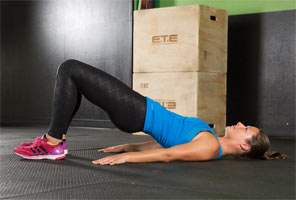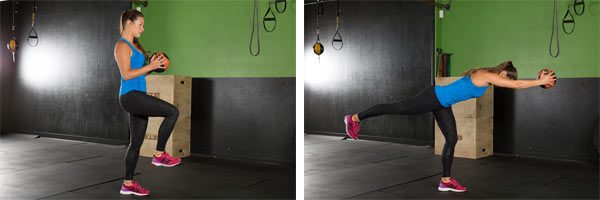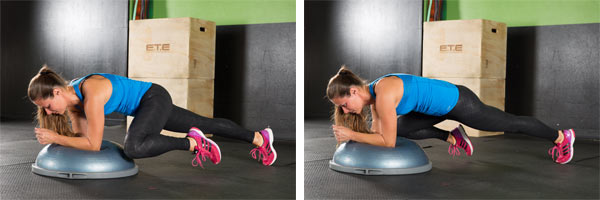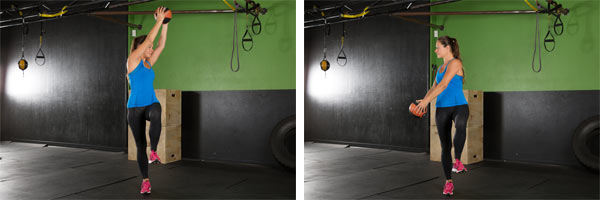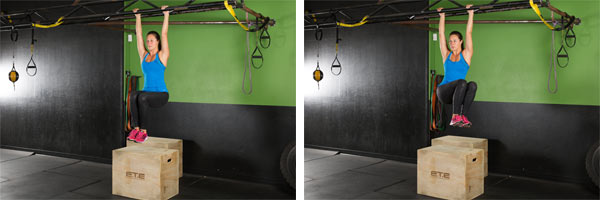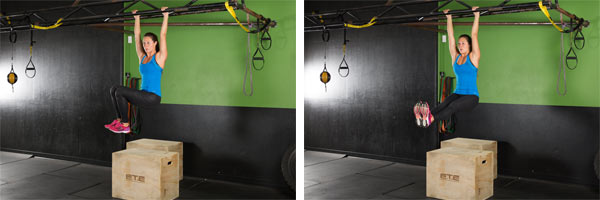
Why
does Individual A have to count every calorie, while it seems like
Individual B can eat anything he wants without gaining a single pound?
The answer all comes down to metabolism. The metabolic process
essentially dictates how quickly your body breaks down sugars, fats, and
other stored energy in your body into usable energy. Those individuals
who have been blessed with a fast metabolism have the ability to quickly
process those energy sources, which means that very little of it is
converted into fat.
While the primary thing you should do for your weight loss efforts
should always be to eat a better, healthier diet (you can check out the
Udemy course titled
A Transformational Dietary Makeover for Weight Loss and Health
for more information), using techniques to boost your metabolism can
multiply your efforts. Additionally, if you have been dieting without
seeing any real results, it is entirely possible that your metabolism is
the culprit.
Remember, the faster your metabolism is running, the more calories
you burn – even when performing the same activities. That means that
with a little tweaking to your metabolic system, you will be able to
more efficiently lose weight. If you think that your metabolism may be
the culprit behind your failed weight loss attempts, then it is time for
you to begin examining the possibilities when it comes to gaining a
fast metabolism.
Metabolism and Aging
One thing that is crucial to point out is that an individual’s
metabolism will naturally slow down over the course of their life. Even
if you had a fast metabolism while you were younger, a slowed metabolism
may have contributed to weight gain. This can take place at as early a
point as one’s thirties.
If this situation sounds familiar to you, rest assured that it is
entirely possible to speed up a metabolism that has slowed down
naturally due to aging. If you’re looking to get back the body that you
had when you were younger, you may consider checking out
I Want My Body Back!, and Udemy course specifically oriented toward those individuals looking to turn back the clock.
A Quick Note on Weight Gain and Difficulties Losing Weight
Before you proceed on to try the metabolism boosting techniques
offered here, it is important for you to determine whether or not there
may be another culprit in your difficulties losing weight. Here are a
few things that you should do prior to attempting to alter your
metabolism through these methods.
- Examine your diet and exercise routine more closely.
Many people believe that they are eating the recommended amounts of
calories, fats, and sugars per day without realizing they are actually
consuming too much. Try keeping a diet log for one week, including
everything that you consume – including beverages. At the end of that
week, come up with a daily average calorie count. Remember, 2000
calories is the recommended amount for a healthy adult male, and you
should tweak that amount depending on your own size.
Many people do not take into consideration the effect that sugar can
have on their weight loss efforts. Sugar can actually be even more
damaging than fat when consumed, because it is converted almost
immediately to fat within the body. Not only that, but it can lead to
other issues such as diabetes that can make weight loss much more
difficult.
- Remember to consult a doctor about your weight problems.
If you find that you are eating the appropriate amount of food but
are not losing weight, something else could be going on with your body.
It is possible that your slow metabolism could be due to an issue such
as an underactive thyroid, which can only be detected through a full
blood panel screening.
Once these three things have been examined and ruled out as
possibilities, then you can begin implementing strategies to boost your
metabolism. Believe it or not, most of the methods that you can use are
relatively simple, requiring only a few minor adjustments to your
lifestyle to complete.
Let’s Get Started: Three Routes to A Faster Metabolism
There is no single way to get a fast metabolism. In fact, most people
will find that the method that eventually works for them may require
only one of the three routes generally recommended, or it may require a
balance of all three in order to be effective.
These three routes toward a fast metabolism all have their own
benefits and drawbacks. Each individual is recommended to try the method
that they are most comfortable with first. They can then begin adding
other methods into their metabolism-boosting regimen as they see
necessary.
Diet plays a big role in one’s overall health, and has perhaps the
single biggest influence on an individual’s metabolism. After all, what
you are eating signals to the body exactly what your body must do in
order to burn calories and to gain the energy it needs. Not only that,
but different types of foods convert to energy in different ways, which
means that you must pay special attention to the science of your diet.
The
10 Weeks: Holistic Nutrition Program course on Udemy can take you more into the science behind food and weight loss.
Your body will respond to the fuel that you put into it when
determining its own metabolic speed, but it will also pay attention to
the way that you are using that energy. If you are a couch potato, your
body knows that it doesn’t need to produce much in order to give you the
energy you need through the day. Simply getting up and exercising
regularly is your first step toward a fast metabolism. However,
performing certain exercises in certain ways can give you a big boost.
There are numerous supplements available to help you in your
metabolism boosting efforts. Each supplement offers something a little
bit different, so it’s important to understand each of them as well as
you possibly can before making a decision on one – or many – to add to
your daily routine. Keep in mind that when taking any supplement, it is
important to understand exactly what it is and what it is doing for your
body. Additionally, there are some supplements that you should avoid at
al costs, so keep this in mind if this is one of the routes that you
choose.
Boosting Your Metabolism Through Diet
Choosing to tweak your diet in order to gain a fast metabolism will
have numerous other benefits. It will of course also go hand-in-hand
with your overall weight loss efforts, as the best metabolism boosting
foods are natural, healthy, low-calorie options. The biggest metabolism
boosting foods can be a bit surprising. Check out these options and then
head on over to Udemy’s
Healthy Cooking Fundamentals course to learn ways you can incorporate these great foods into your diet.
- Red Beans, Black Beans, and Lentils
You may have seen various types beans fried, mashed, or covered in a
heavy sauce and canned. However, beans in their purist form can be an
incredible metabolism booster. The biggest benefit of red beans is the
fact that they contain a natural type of starch that helps to reduce
insulin in the body. They come with the added benefit of helping you to
feel more full, and the natural vitamins in red beans can contribute to
the building of calorie-burning muscle – all of which plays a role in
creating a fast metabolism.
- Broccoli, Cauliflower, and Cabbage
These nutritious foods all come from the same family, and as such all
have the same great metabolism-boosting properties. They are high in
fiber as well as water, and these two factors together can boost your
ability to burn fat by a mind-blowing 30 percent! It’s always best to
eat these veggies fresh, though frozen works as well. Just remember to
lay off flavorings such as butter and cheese. A little salt and pepper
should be enough to do the trick if you decide to cook them (and
remember, they are just as delicious raw).
Protein is an important metabolism booster, and egg white contain
protein in spades. Not only that, but the branched-chain amino acids
contained within egg whites have the ability to really prime your
metabolism to begin moving at a rapid pace. The question of how good egg
yolks are for you is still up in the air, though it’s still best
to eat them only sparingly. Egg whites, on the other hand, can become
diet essential. From omelets to a healthy and flavorful addition to
Asian noodles, there are plenty of ways to use egg whites in your diet.
As hot, spicy, and flavorful as chili peppers are, it is almost not
that surprising that they offer a tremendous boost to the body’s
metabolism. This is largely due to capsaicin, the component of chili
peppers that makes them so spicy, and which also has intense effects on
the body’s metabolism. Keep in mind that it is primarily fresh peppers
that have this effect. Try having them in some salsa or chopping up a
small amount to have in eggs, on sandwiches, or wherever a bit of spice
can do your food some good.
Can’t do without your morning cup of coffee? Well, here is some goods
news – your favorite breakfast beverage also has some powerful
metabolism effects, largely due to the caffeine that it contains. Other
natural caffeine sources including black tea and green tea can also be
very beneficial to your metabolic system. Do keep in mind that adding
excessive sugar and cream to these drinks can negate its good effects,
so stick to natural sweeteners such as hone and, if you must have cream,
go for a low-fat or no-fat option.
And here’s one more thing to keep in mind when it comes to boosting
your metabolism through diet. Dehydration can slow your metabolism to a
grinding halt, so if you are not already getting your recommended amount
of water throughout the day, now is absolutely the time to start.
Drinking more water has many other benefits as well, such as improved
skin and better mental clarity, so there’s no reason to ignore this
essential component of a healthy, metabolism boosting diet.
Boosting Your Metabolism Through Exercise
Boosting your metabolism while getting fit at the same time is an
incredible one-two punch that can knock out fat and leave you feeling
great in no time at all. To understand why the top metabolism boosting
workouts work, you have to understand a little bit of the science behind
how our bodies burn calories.
Essentially, fat is made to store energy, while muscle is meant to
burn energy. That means that the more muscle you have on your body, the
quicker you begin to burn off the calories that you have in storage.
Therefore, the best metabolism-boosting exercises and workouts are those
that combine proper strength training with intense cardio.
First things first, it’s important for you to know that strength
training won’t add excessive bulk to your body. What you are aiming for
is the addition of lean muscle on areas such as the shoulders, arms,
abdomen, glutes, and thighs. There are many different types of workouts
for you to choose from, but keep in mind that you don’t need a
membership to the local gym in order to reap the benefits of strength
training. For more information on creating a workout routine right at
home, check out the
“No Equipment, No Excuses” Home Workout available on Udemy.
Here are three strength-training exercises that you can make a part of your daily routine to start stimulating your metabolism.
Lay flat on the ground, as if you were about to perform a push-up.
However, rather than push with the palms of your hands, keep your
forearms flat against the ground as you push your body up. At this
point, only your toes and forearms should be in contact with the ground.
Hold this pose for up to sixty seconds, depending on what you are
capable of.
To add a cardio boost to this exercise, you can also alternate
lifting your legs above your body, keeping them in alignment with your
spine. Two to three sets of ten reps is recommended for this move.
This exercise is highly recommended for a metabolism boost because it
can combine the benefits of both strength and cardio. From a standing
position, simply step out with one leg, with your back foot lifting up
onto its toe. Then return to position and repeat with the other leg.
Perform twenty of these reps (one for each leg). Try speeding up your
lunges to keep your heart rate up while working out for an additional
boost.
With a pair of dumbbells in your favored weight – about five to ten
pounds should do the trick – simply squat down until the dumbbells are
touching the floor. Then simply pull yourself up into the appropriate
position, curling the arm inward once you are standing. Do two to five
sets of ten reps.
Because this exercise is largely strength oriented, you may consider doing light cardio exercises between sets.
Source








































